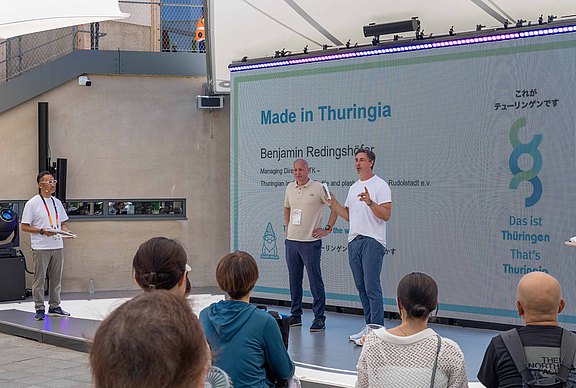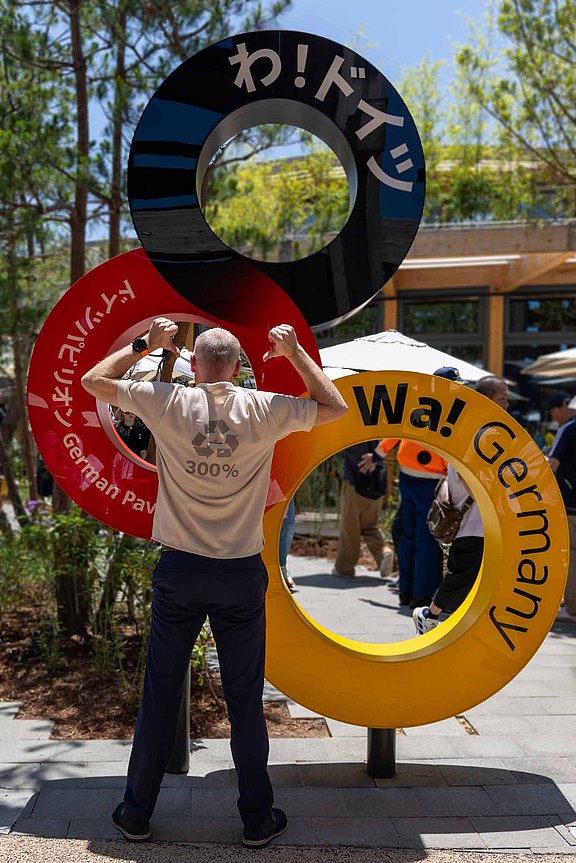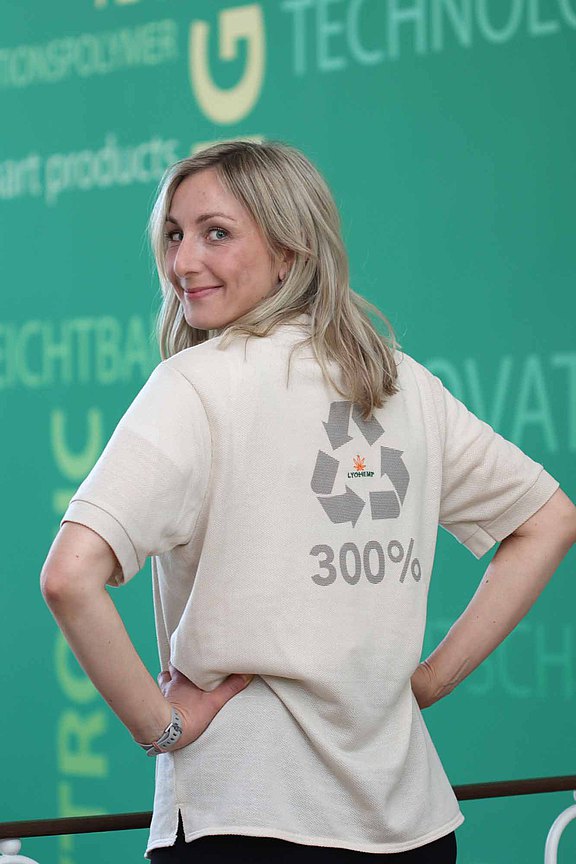TITK is breaking new ground in textile recycling. At the world exhibition in Japan, the research institute presented a polo shirt made from triple-recycled cellulose fiber. The fiber used is the company's own innovation, Lyohemp® – the first Lyocell fiber made from hemp pulp.
Rudolstadt/Osaka – TITK's managing director, Benjamin Redlingshöfer, personally wore the polo shirt at the Expo in Osaka on 2025, June 17. During the Thuringian Federal State Week, he was interviewed on stage by presenter Marco Schreyl. Redlingshöfer proudly showed off his polo shirt with the “300% Recycling” print. This means that the shirt is made from a fiber that has undergone three consecutive recycling processes for the first time. And it did so so well that it could be easily processed into a fashionable polo shirt with excellent wearing comfort. “With our 300% recycled fiber, we are demonstrating that closed textile recycling loops are feasible thanks to our technology,” says Redlingshöfer. “This innovation proves that we can take recycling in the textile industry to a whole new level.”
When textiles are recycled at all, it often involves what is known as downcycling. This means that the originally high-quality textile fibers are used to manufacture lower-quality textile products as part of material recycling. The fiber-to-fiber recycling pursued at TITK, however, aims to produce a recycled fiber from a high-quality textile fiber with the same high level of quality and the same good usage properties. But even in these recycling loops, only 20 to 40 percent of recycled materials are often mixed with a larger proportion of virgin grade material.
“TITK has now impressively demonstrated that not only is 100 percent recycling of cellulose fibers possible, but that this process can even be used three times in a row without compromising the desired characteristics of the fiber, such as a pleasant, soft feel, a slight sheen, and very good, uniform dyeability,” says Redlingshöfer.
Recycling process also applicable to cotton
The result is a fully-fledged, sustainable product that now sets the standard for future recycling processes in the clothing industry. This will enable the consumption of new virgin-grade fibers to be drastically reduced in the future. This outstanding innovation was achieved thanks to a further adaptation of the very robust Lyocell process established at the institute – specifically in terms of pulp extraction and pretreatment, says Redlingshöfer. “In principle, this recycling loop can also be applied to cotton fibers as the raw material.” TITK invites industry partners to work together on the further development and implementation of these technologies.
Under the banner of the Demonstration and Innovation Center for Textile Circular Economy (DICE), which was founded at the Rudolstadt institute and is currently under construction, developments in the holistic recycling of textiles are already being driven forward. TITK researchers are now transferring findings from the Lyohemp® recycling project to so-called polycotton textiles, whereby the two material streams of synthetic and cellulosic fibers are additionally separated in order to then recombine them into a material quality suitable for fiber spinning (fiber-to-fiber recycling).
“However,” adds the institute director, “we cannot rely solely on technological solutions to absolve us of our responsibility to use our resources responsibly.” For good reason, the RRR rule often cited in the circular economy has two additional Rs before recycling: reduce and reuse – in other words, consume less and reuse more. Redlingshöfer: “Only in combination with a more conscious use of our raw materials will we be able to make a significant contribution to practical sustainability.”



